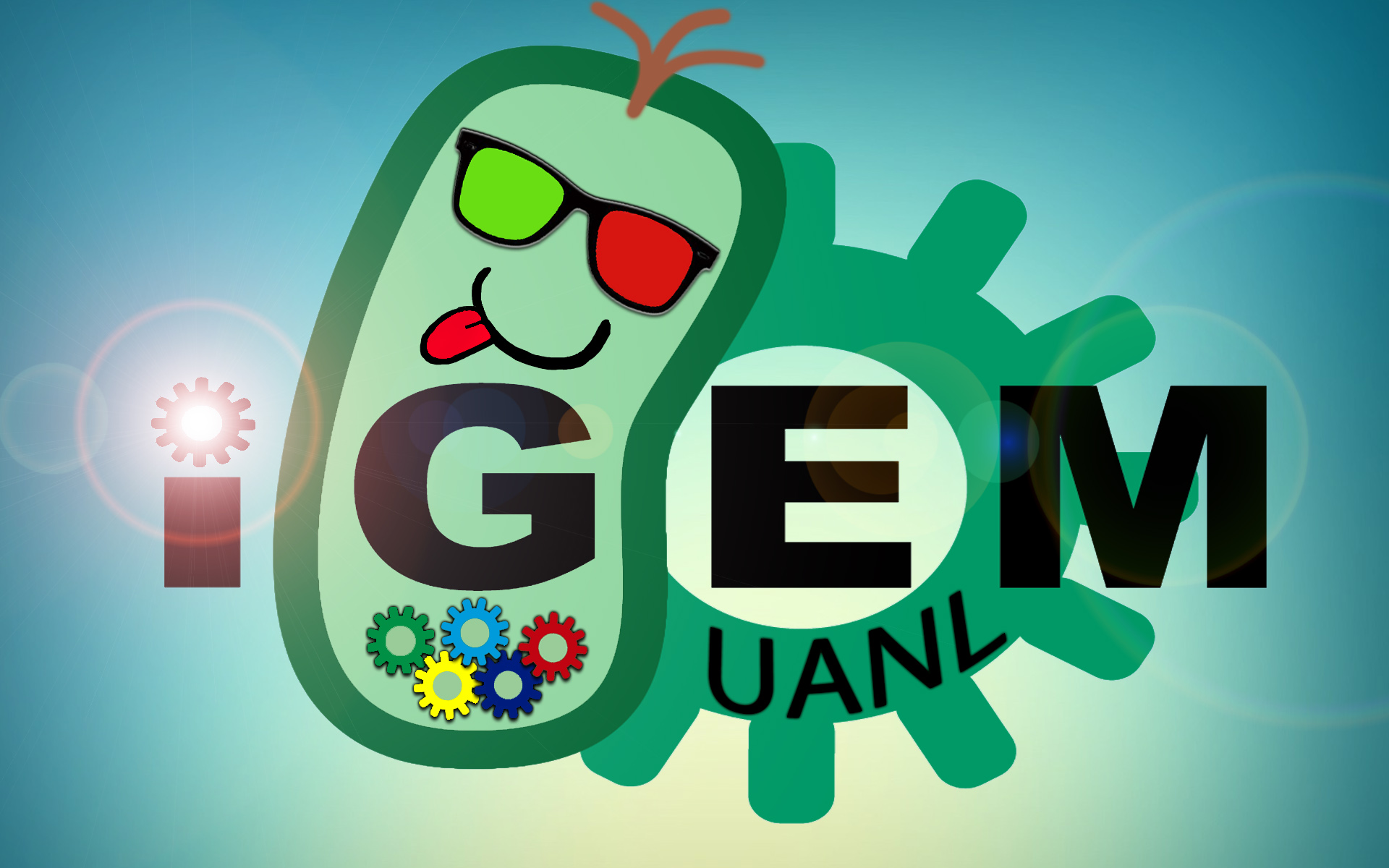Team:UANL Mty-Mexico
From 2011.igem.org
| Line 15: | Line 15: | ||
The main idea consists of enabling a bacterial community to interpret a simple code. The code will be composed of just red and green lights. The genetic circuit on which the interpretation relies is not dependent on the nature of the stimuli though, whether light or chemical the information processing remains the same. '''''[[Team:UANL_Mty-Mexico/The_Code#The_Code|Read more...]]''''' | The main idea consists of enabling a bacterial community to interpret a simple code. The code will be composed of just red and green lights. The genetic circuit on which the interpretation relies is not dependent on the nature of the stimuli though, whether light or chemical the information processing remains the same. '''''[[Team:UANL_Mty-Mexico/The_Code#The_Code|Read more...]]''''' | ||
| - | |||
| - | |||
| - | |||
== Where we are from == | == Where we are from == | ||
Revision as of 20:24, 8 September 2011
Team News
The Code
The main idea consists of enabling a bacterial community to interpret a simple code. The code will be composed of just red and green lights. The genetic circuit on which the interpretation relies is not dependent on the nature of the stimuli though, whether light or chemical the information processing remains the same. Read more...
Where we are from
Mexico, officially called Estados Unidos Mexicanos, is a country located in the southern part of North America. It limits the north with the United States of America and southeast by Belize and Guatemala. It is the fifth largest country in the Americas by total area and the fourteenth largest country in the world. Read more...
Project description
Information processing through living things remains a challenge to science. Logic-gate based genetic circuits to program bacteria have been constructed, allowing the achievement of more complex answers.1 This represents an incredible advance from previous systems that require one input for every output seeking to control.
The main purpose of our project is to achieve a new way for regulating gene expression through logic gates that globally perform a complex answer. It aims at building a genetic circuit that enables a bacterial community to interpret a simple light-based code. The community will be constituted by different E. coli clones that communicate with each other and overall interpret the code. We consider this an advantageous approach since compartmentalizing the circuit lowers the construction size and metabolic charge per cell. Different genotypes in each clone will give them the capability to take green or red light as gene-expression stimulating input. We pursue to control the independent expression of five different products by using wavelength light patterns.
Although the concept does not depend on the type of input, light will be a plus to our project as it is an elegant non-invasive way to input a genetic circuit. To our knowledge, every logic-gate based genetic circuit constructed so far uses chemical inputs.1 Nevertheless, light sensing proteins have been successfully characterized in the last few years;2, 3 therefore, we think there is a great potential on combining both types of devices into genetic circuits that take light as input.
References
- Tamsir A, Tabor JJ, Voigt CA. (2010). Robust multicellular computing using genetically encoded NOR gates and chemical ‘wires’. Nature. 469: 212-215.
- Levskaya A, et al. (2005). Synthetic 674 biology: engineering Escherichia coli to see light. Nature. 438: 441–442.
- Tabor JJ, Levskaya A, Voigt CA. (2010). Multichromatic Control of Gene Expression in Escherichia coli. J. Mol. Biol. 405: 315-324.
 "
"

